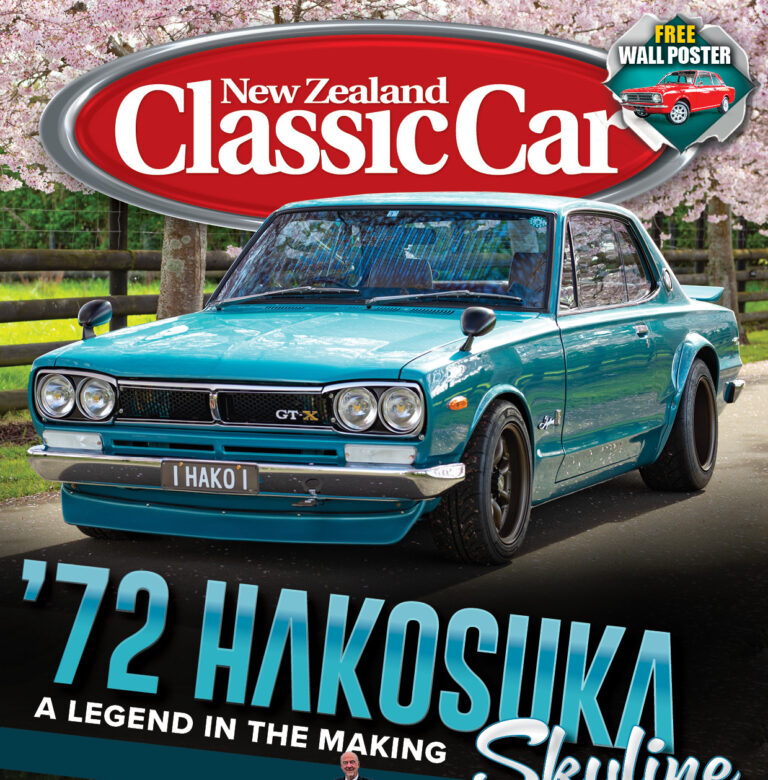The Capri is “the car you always promised yourself”, according to Ford. Best not to leave it too much longer, as those who get a good one tend to hang onto it
By Ashley Webb

The Capri was the car that other makers wanted to knock off its perch throughout the ’70s and ’80s, but few had the universal appeal of the rakish coupé that Ford billed as “the car you always promised yourself”. It was, to all intents and purposes, the European equivalent of the Ford Mustang.
Penned by Mustang designer Philip Thomas Clark, the Ford Capri was intended to impress Europe’s hoi polloi. And it did. When launched in 1969, the Capri was a runaway success for a coupé — usually a niche market — across Europe, Australia, and Japan. It even sold pretty well in North America where, badged as the Mercury Capri, it sold handsomely alongside the iconic ’Stang.

There was one drawback, however. Despite its sporty looks, keen drivers were disappointed by the standard car’s underwhelming 1.3-litre engine, while the range-topping 128bhp (95kW) 3.0-litre model was still less than overwhelming. Enthusiasts would have to wait until 1981, when Ford introduced the more vigorous fuel-injected 160bhp (119kW) 2.8-litre unit. The Capri 2.8 injection engine, the first-ever project by Ford’s Special Vehicle Engineering team, revived the range and kept the car in production several years longer than Ford had originally planned. In 1984, the 2.8 injection model was the subject of a substantial upgrade and was known as the ‘Capri Injection Special’.
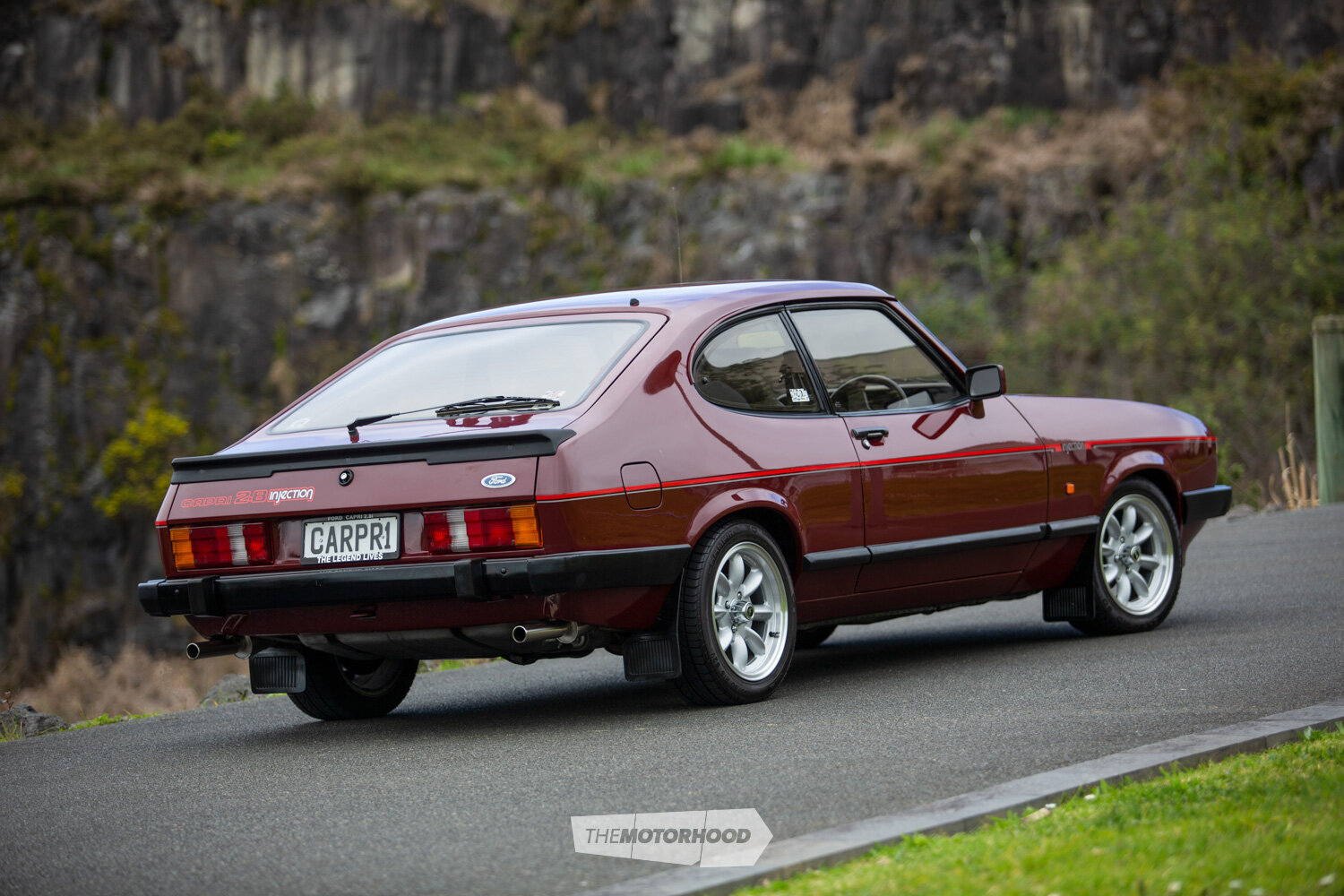
The long way home
Alan Bentinck-Stokes has owned this pristine 1986 Ford Capri 2.8 for almost a decade. Having restored a black Capri 2.8i (registration ‘86MK3’), which he sold in 2009, seller’s remorse took him back to the market in search of an exceptional example. After a couple of years’ passive watching, this beauty presented itself one Saturday morning. After a quick phone call to the seller, this Capri was secured and installed as ‘the one’. It was also well known to the Capri Club’s local Auckland rep, Jeff Carline, who gave it a strong endorsement, so a deal was quickly and confidently done. A couple of days later Alan stepped off a plane at Palmerston North Airport to be met by then-owner Norm and the Capri.
“An hour or so later I was setting out on an adventurous road trip back to Auckland, taking an off-the-beaten-track country road, following the Manawatu rural route through to Mangaweka, a scenic route and insight into older New Zealand which I’d recommend to anyone,” says Alan.

Factory spec
Alan’s Capri was produced at Ford’s Cologne plant in Germany, rolling off the production line in June 1986, just six months before production of the last-ever Ford Capri. Finished in Lacquer Red, this late-model Injection Special boasts Bosch K-Jetronic fuel injection and standard factory-spec five-speed gearbox, a limited slip differential (LSD), and RS-style factory alloys, with other embellishments including half-leather Recaro seats, opening rear quarter windows, a colour-coded grille, and a winding steel sunroof. With these specs, this Capri virtually represents the final culmination of Ford’s 17 years of Capri development, over which time close to 1.9 million Capris were produced.
The only other major development beyond the Injection Special was the Capri 280, which was produced over November–December 1986. This was the run-out model, utilizing the remaining 1038 bodyshells, all of which were painted Brooklands green, powered by the 2.8 Injection Special V6 and adorned with 15-inch alloys and a black leather interior.
Mighty survivor
From Germany, Alan’s Capri was exported later in 1986 to the UK, where it was registered and spent its first months of life. A short time later, it was shipped out to New Zealand as a private import — Ford New Zealand had discontinued sales of the Capri here in 1983. It was first registered as ‘NN253’ on 2 October 1987. Later owners replaced this registration with ‘28EYE’ in 2004, then with its current registration ‘CARPR1’ in 2008.

Alan takes up the story from here.
“A truly mighty survivor, this Capri has enjoyed a fairly nurtured but very driven life. Across its six owners, it has clocked up only 58,800 miles — 94,600 km — from new. It remains completely factory standard, even down to the Ford radio-cassette player. Everything works, from the rear window heater and front and rear wiper washers to the heater; even the clock keeps perfect time. The leather seats are all in pristine condition. The front Recaros are a treat to drive in and comfortable on long runs. When rolled back on their rail, the interior takes on a definite 2+2 feel as the rear seat shrinks into insignificance. The bold pinstriping and dramatic factory body graphics are in great nick, too: ‘Injection’ on the front guards and ‘Injection Special’ on the rear hatch, bang on the trend emerging in the 1980s for metal badging to give way to decals and stickers. I think that the funky font of the graphics places this car right there in the mid ’80s.
“Under the rear hatch, the paint still holds its shine and the original German Goodyear wheel still resides in the spare well. Underbody, there are remnants of factory chalk marks behind the front valance panel, and not even the remotest hint of any rust. I cannot recall a time that it has failed to start on the first turn of the key, even after winter hibernation under its cover in the garage.”
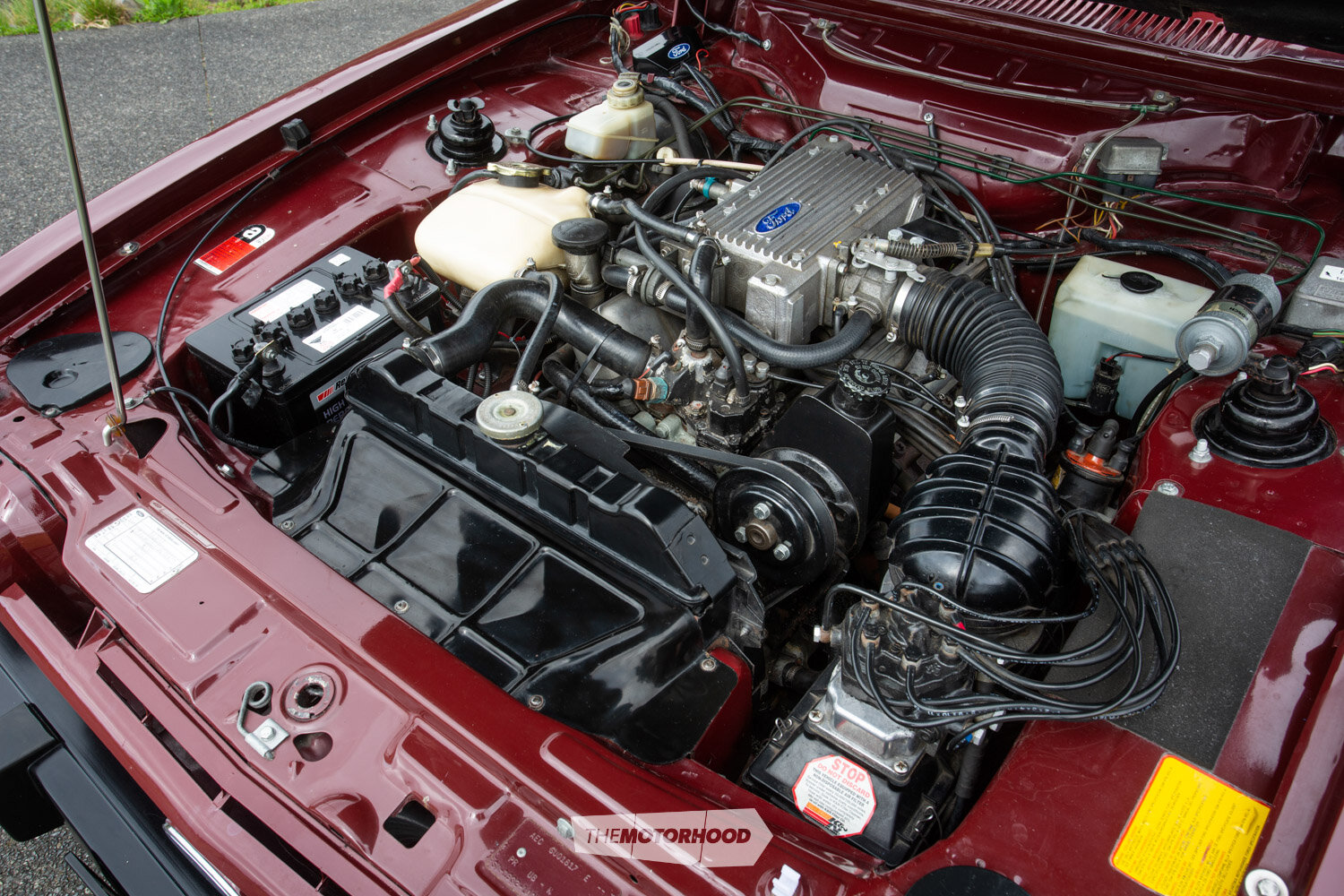
Unique look
Alan continues, “For me, a Capri holds a lot of visual appeal, as I’m sure it does for many car aficionados. I struggle to settle on what the nicest aesthetic attribute of Capris might be, but as far as the Mk3 is concerned, if it’s not the entire side profile, then it’s probably the design of the bonnet’s leading edge, which conceals the top of the quad headlights, giving the whole front a unique and purposeful look.
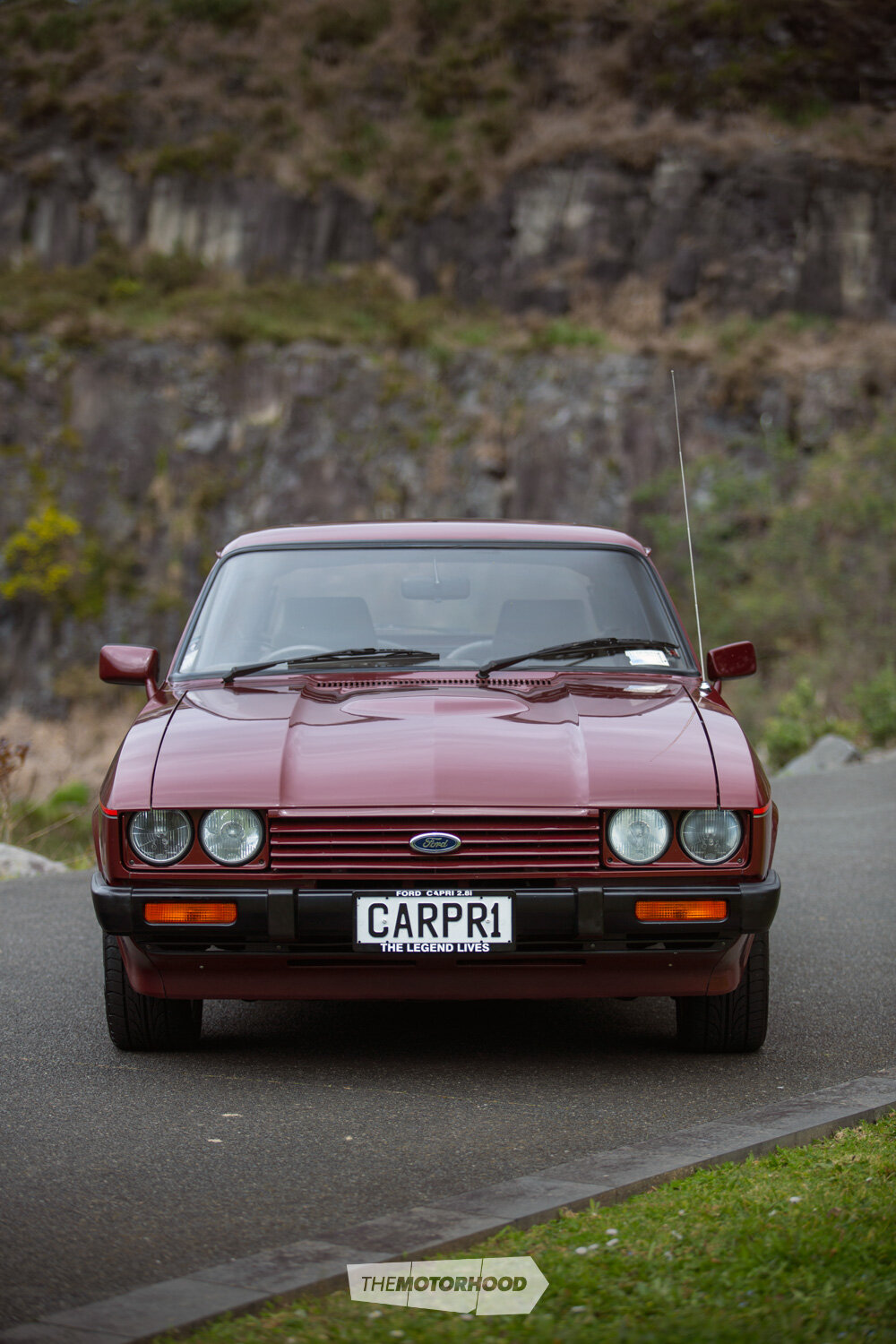
“Not only does the car have great visual appeal, it sounds even better. The iconic exhaust burble and sensational exhaust notes so characteristic of these V6 Capris are in large part due to a factory-fitted exhaust ‘bladder’ just past the exhaust manifold. The preceding Essex V6 had the same bladder and burble. This reverberating burble is at its most enjoyable on winding roads and it is usually the music of choice on our runs over the Coromandel ranges or down the Coromandel coast — sunroof and windows open, of course!
“Another feature of this Capri’s appeal is the smell of the ageing leather interior, which, for me, delivers a distinctively pleasant aroma after the car has been closed up for a while. It’s reminiscent of the 1952 Daimler Consort my dad had for decades as the family pet car. The leather in that Daimler emitted an identical aroma.
“I have to say, though, that driving the Capri is just good fun; it’s hard to tire of. The V6 is strong and has plenty of pull. The car, in its heart, is a cruiser. It’s fabulous on longer trips and thrives on slowly winding roads. Gentle corners are its thing. The gears generally have plenty of range, and fifth is largely an overdrive tagged onto what was a four-speed transmission prior to the 1984 facelift.
“Surprisingly for a car nearly four decades old, it has no annoying vibrations, rattles, or noises, which might be expected. It brakes in a straight line but braking does require patience … The power steering is hardly light around town, but settles nicely and precisely on the highway. Neither really deserves a grizzle.”
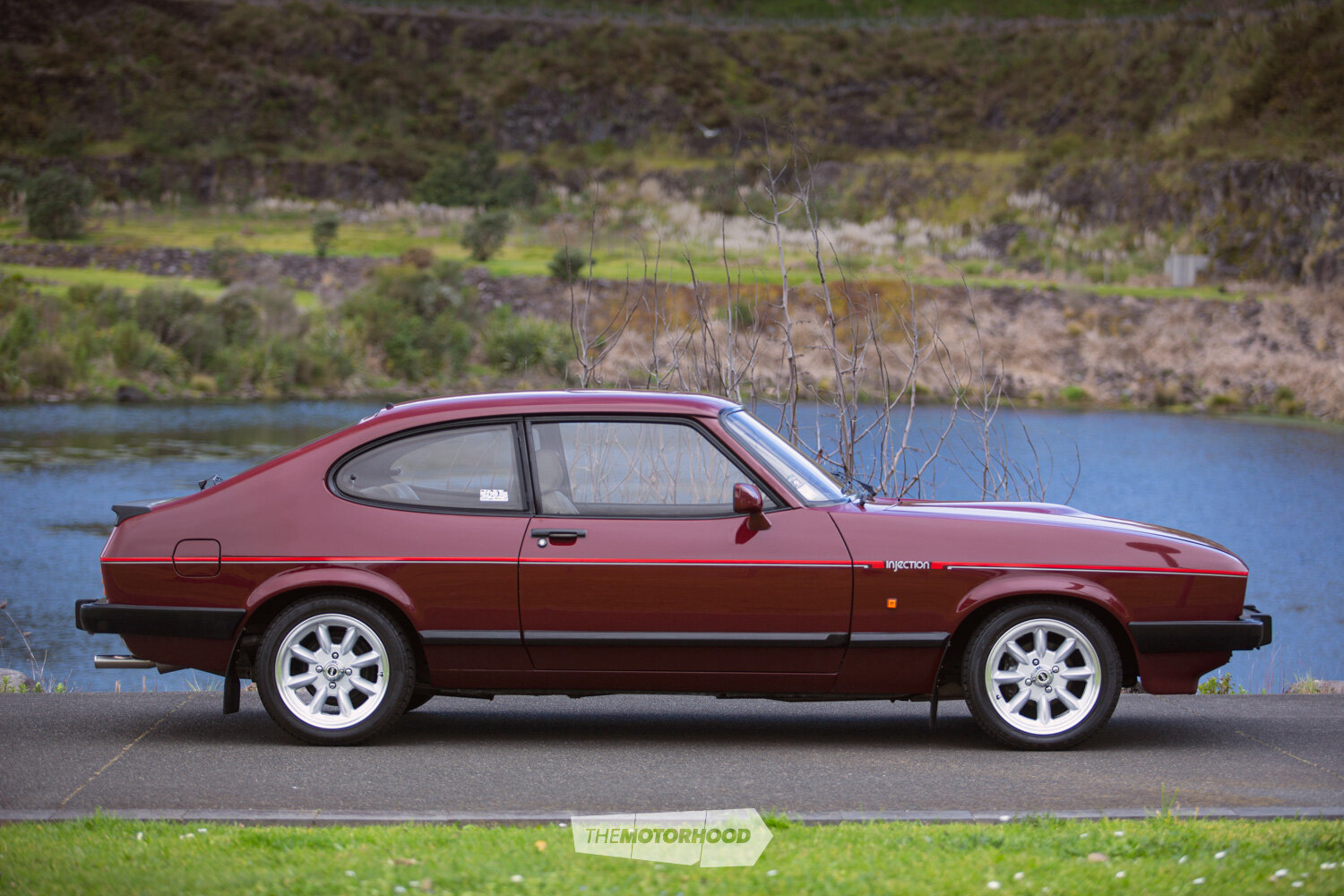
1986 Ford Capri 2.8
Engine: Ford Cologne V6 2.8-litre
Capacity: 2792cc
Bore/Stroke: 93mm/68.5mm
Valves: Two valves per cylinder, overhead valves
Comp. ratio: 9.2:1
Max power: 118kW at 5700rpm
Max torque: 221Nm at 4300rpm
Fuel system: Bosch K-Jetronic indirect fuel injection
Transmission: Five-speed manual
Suspension, F/R: Independent, MacPherson, coil springs, anti-roll bar / Rigid axle, leaf spring, anti-roll bar
Steering: Power-assisted rack-and-pinion
Brakes, F/R: Power-assisted ventilated disc / Drum
Dimensions
Overall length: 4439mm
Width: 1698mm
Height: 1323mm
Wheelbase: 2563mm
Track, F/R: 1400mm/1431mm
Kerb weight: 1230kg
Performance
Max speed: 210kph
0–100kph: 7.8 seconds
Standing quarter-mile: 16.4 seconds
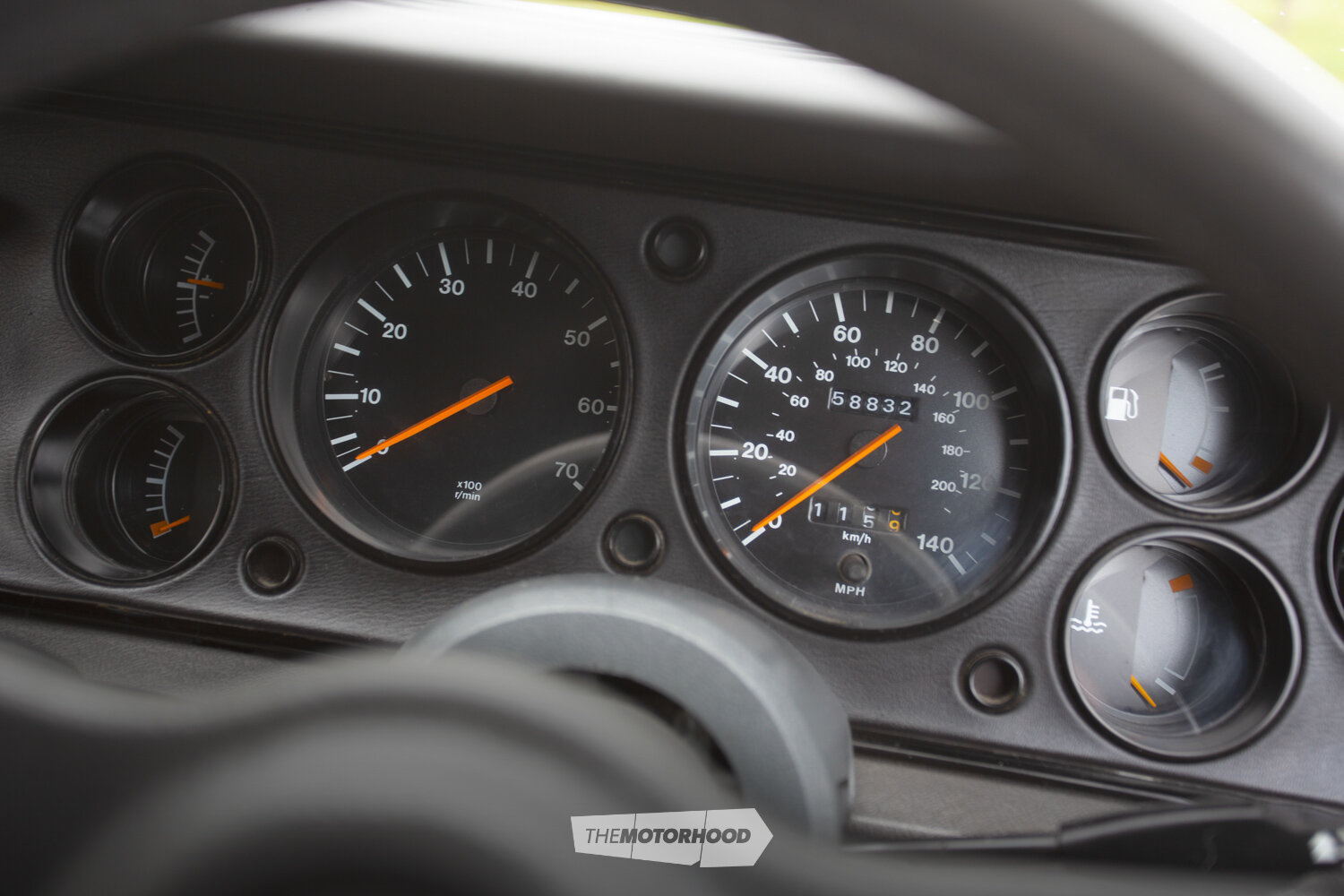
Family member
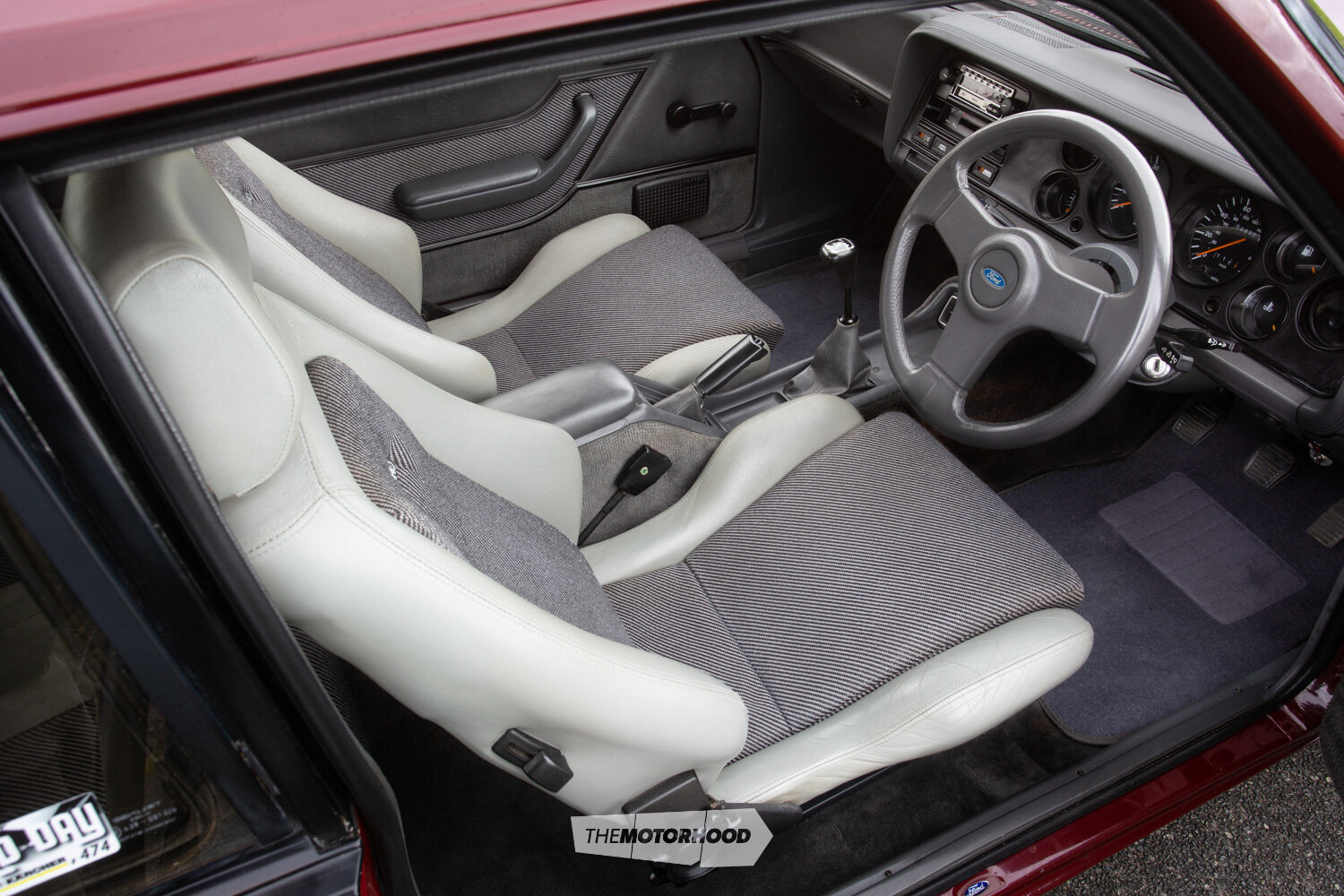
“The Capri is part of our family. It enjoys regular use, most of which tends to be long jaunts. The kids and the Capri have grown up together. My son Jack has always taken a keen interest in it, as he has in some of the other cars we have had, most notably the 1600 Escort Sport, the earlier Capri, the exciting Sierra Cosworth. Some of these models were his selected Xbox simulated racing cars he ran on Forza .
“It was only natural then, when he was preparing for his driver licence earlier this year, he mastered the manual gearbox in the Capri. To a novice, the heavy clutch, elusive gear notches, and heavy steering can be daunting, but Jack mastered the task pretty fast. Learning to drive manuals in a classic Capri? Legendary.
“The Capri gets plenty of exercise, mostly over summer of course. It makes its way to car displays, club events when dates sync, impromptu runs with friends, and some of the coffee/cafe/classics Sunday meets. It particularly enjoys regular runs to the Coromandel and the Waikato, enough to keep it fit and regular, but we’re not letting the miles get away on it too much.”

This article originally appeared in New Zealand Classic Car issue No. 359

